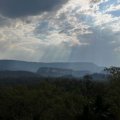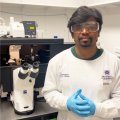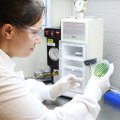Comparing the DNA in leather from the Dead Sea Scrolls to that found in shoes and other archaeological artefacts dating back as far as 3000 years BC will ultimately shed light on the authors of the Dead Sea Scrolls.
Carney Matheson, a PhD student from the Institute for Molecular Bioscience (IMB) at The University of Queensland, has been analysing samples found in the Judean and Negev Deserts, to identify what animals were used in making these artefacts.
Mr Matheson said it was generally agreed the Dead Sea Scrolls were authored by the Essenes, a monastic community based at the site of Qumran.
"The Dead Sea Scrolls are currently believed by some to be the original scriptures from which the bible was written and we hope to establish if the Scrolls were made in the local area or brought to Qumran for storage," Mr Matheson.
By extracting DNA from the Dead Sea Scrolls and comparing it to DNA from a leather shoe found in the same area Mr Matheson will establish the type of animal used and if it was from the local area or not.
"This will establish the Essenes as either the makers of the Dead Sea Scrolls or simply the librarians," Mr Matheson said.
"It will also answer the important archaeological question of whether the site of Qumran, the home of the Essenes, was a repository or library for keeping scrolls or if the site is the location of the making, writing and storing of scrolls.
"Unfortunately we don't yet have the technology to analyse the actual writings themselves and establish if the Essenes are the authors of the Scrolls," he said.
Mr Matheson said their analysis to date had revealed a few surprises, with more than one type of animal contributing to the Dead Sea Scrolls.
"So far we have found DNA from both goat and ibex in the Scrolls. This is quite bewildering as the goat is a 'domestic' animal whereas the ibex is 'wild'," he said.
The IMB is one of Australasia's leading research institutes and a major centre for molecular bioscience research. It links leading genomic discovery and bioinformatics facilities with state of the art research in developmental biology, cell biology, structural biology and chemistry, so as to understand human and animal biology and to develop new pharmaceuticals, diagnostics, nanotechnologies and disease therapies.
Media: For further information please contact Russell Griggs (07 3365 1805) or (0421 056 980)
.jpg)



